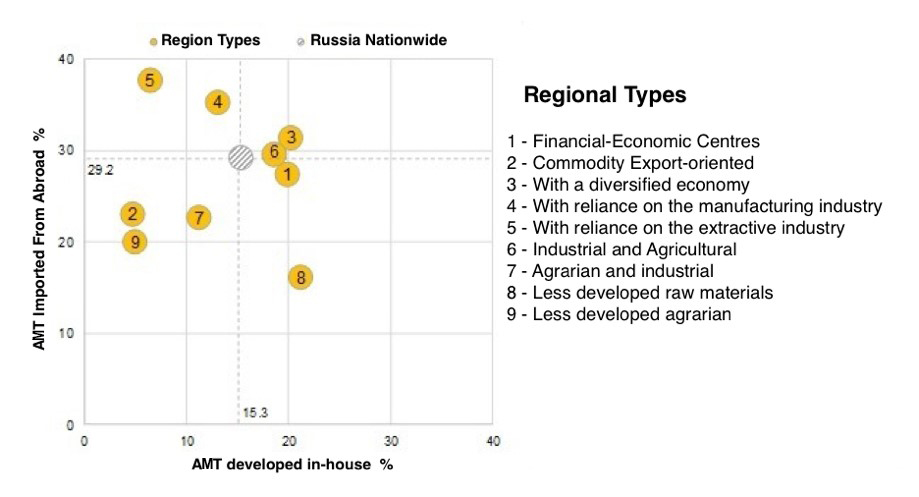Almost 30% of Advanced Manufacturing Technologies Used in Russia Are Acquired from Abroad

Russian enterprises have limited opportunities to modernise their technological capabilities independently. Their technological portfolios reveal a high dependence on imported solutions and a limited use of their own developments, HSE researchers discovered.
In recent years, there has been a growing demand for the use of advanced manufacturing technologies (AMT) in Russia. Between 2011 and 2018, the utilization of AMT increased by 33%, and in 2018 its utilization amounted to almost 255,000 units in absolute terms. Meanwhile, innovation strategies focused on the independent development of novel manufacturing solutions remain limited in Russia. Fewer than 20% of organizations meet the need for AMT by using their own resources; the majority purchase their technology either in Russia or abroad.

Konstantin Fursov, Deputy Director of the Centre for Statistics and Monitoring of S&T and Innovation, HSE University, study co-author
Since the mid-1990s, researchers in Russia have increasingly collected and maintained statistics on the development and use of advanced manufacturing technology. We have analysed this data systematically for the first time and showed the extent to which our production relies on its own developments or on the acquisition of foreign ones.
Considering the results of the federal statistical observation of the use of AMT from 2011-2018, HSE University researchers assessed for the first time the technological self-sufficiency of Russian production at the regional level. The study implemented a synthetic classification of territories, dividing the regions into nine types according to basic parameters of their economic development. This made it possible to establish the relationship between enterprises’ technological portfolios and the socio-economic conditions in which they were developed.

Vlada Brilliantova, Expert at the Ministry of Digital Development, Communications and Mass Media of the Russian Federation, study co-author
Russia’s financial and economic centres and regions with diversified economies account for more than 50% of AMT development in the country. ‘It is not surprising, therefore, that metropolitan regions and areas with diversified economies, such as Tatarstan, Tyumen, and Novosibirsk, demonstrate the highest adoption rates of independently developed AMT, since they have a high level of financial and economic activity and technological production facilities in place. The latter, in particular, require the development of in-house solutions.
Nationwide trends are manifested in most region types. All regions (except one agricultural region category) demonstrate relatively high dependence on imported technologies (ranging from 16% to 38%) paired with low rates of AMT in-house utilization (less than 22% in all types of regions).
Yet, the results of the study show that the demand for AMT developed in Russia is increasing. Successful examples of the use of AMT acquired in Russia are demonstrated by those types of developed regions, whose economies rely on extractive and manufacturing industries, as well as regions that ensure effective industry-science interactions.

Valeriya Vlasova, Research Fellow, Laboratory for the Economics of Innovation, HSE University, study co-author
Strong industry-science junctions might boost the market-entry opportunities for technologies developed by Russian R&D organizations. To that end, it is crucial to ensure that there are sustainable mechanisms of technological transfer to the real sector of the economy, in particular by means of specialised state support.
The study is the first to present statistical data on the distribution of advanced manufacturing technologies in Russia's regions, but it has a number of important limitations. Since the authors worked with aggregated data, it was not possible to set and test hypotheses about the relationship between enterprises' technological strategies and regions' socio-economic profiles. This significantly limits the validity of the conclusions presented. In addition, while the article was being reviewed by the editors of the journal, new data appeared that may impact the researchers' findings.
Table. Russian regions' technological portfolios in relation to AMT sources and use

Konstantin Fursov

